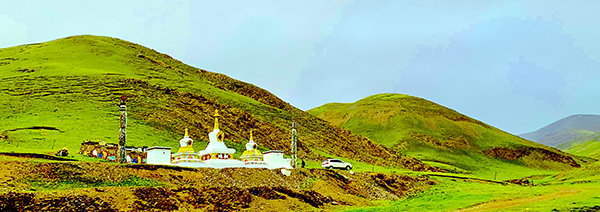Joining road warriors' journey to the west
By Erik Nilsson | China Daily | Updated: 2019-07-16 08:16

Arriving and departing
We arrived in the county seat to a traditional Tibetan feast.
Tseringben's family had prepared boiled sheep ribs; yak butter, milk tea and yoghurt; and ingredients for tsampa, a hand-kneaded mash of highland-barley flour, crunchy yak cheese, sugar and yak milk.
The next day, we barbecued in capricious weather on the banks of an oxbow that slaloms through the grassland, after visiting the local monastery amid an umbrella-inverting rainstorm. We used yak dung to ignite the charcoal to roast our lamb and potato kebabs after the elements had extinguished the kerosene.
It was delicious.
The next day, our caravan of road warriors rode yaks and then continued our respective journeys in different directions.
I stayed in Qumarleb for a day to do volunteer work, catch up with old friends and investigate how poverty-alleviation initiatives are transforming the nomadic communities.
Before flying back to Beijing, I traveled to Yushu to revisit its monasteries and the world's largest mani (prayer-stone) wall.
The cross-country journey showed me how northern China's vast and often-desolate geography is conjured by its varied and sometimes-vindictive geology.
And it also revealed how these - and the scenery, wildlife and cultures they sire - are all connected.
That is, kilometer by kilometer, on the open road - for roughly 4,000 km, as the yak trots or the SUV drives.
























